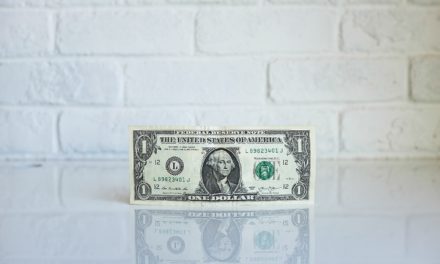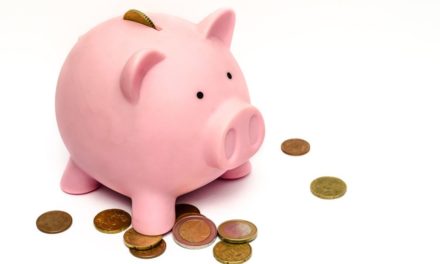Debt can take many forms. There’s credit card debt, layaway plans, mortgages, and unsecured loans. There are car loans, school loans, and money that you borrowed from a family member.
Our economy encourages borrowing instead of saving, and we often find ourselves in debt to buy the things that we want. Some of the things we buy are classified as good, such as education or a house. Others we could probably do without, such as upgrading to a 70″ TV screen on a layaway plan.
But even if we can rationalize the purchase, does it make financial sense to take on debt for it?
Always Look At The Numbers
As suggested by the title of this post, some kinds of debt are better than others. However, we usually don’t make debt decisions from a strictly financial perspective. Some debt can bolster you to future success, while other debt simply weighs you down. In order to avoid being weighed down, we need to include a little financial reasoning in our decision making. Let’s look at an example of student loan debt.
Alfred just graduated high school. He can either start working now for $8 an hour, or he can go to college. Depending on the field of study that Alfred pursues, a college degree will allow him to earn $18 – $25 per hour (and sometimes more). With tuition, books, and fees, his costs will be about $25K per year. Alfred won’t have to start paying back the loans until after he graduates, so it seems like a pretty good deal. So Alfred, like many others, decides that it is worth the debt burden of $100K+ to allow him to earn a college degree. His earning potential will double or triple, so he figures he will be able to pay off the loans without a problem.
Here are two breakdowns of the situation. This first breakdown shows a common thought process:
- Alfred’s starting salary will probably double or triple after college
- Alfred will probably get some scholarships
- With his degree, Alfred should be able to get a good job that allows him to pay off his loans in a few years
- Conclusion: Alfred should go to college
This second breakdown includes a financial assessment and actually looks at the numbers:
- Alfred’s starting salary will jump from $16K to around $40K
- Alfred’s cost is $100K over four years, plus 6.8% interest for a Stafford loan (Do people actually look at the interest rates on student loans? Or do they blindly accept them?) which equates to $38,096.57 in interest over a 10 year term
- Given these numbers, Alfred’s monthly payment will be $1,150.80
- Assuming that 10% of Alfred’s gross monthly income will be applied toward the loan, Alfred will need an annual salary of about $138K to be able to pay off this loan
- Conclusion: Alfred should reconsider going to a 4-year college, as a $40K salary is not even close to $138K

It only looks like free money.
The first breakdown sounds pretty good. It’s straightforward and makes logical sense. However, once you take a look at the numbers, it doesn’t really make financial sense. What if Alfred got some scholarships? Yes, that would help lower the total amount owed. What if he picks a high-paying, in-demand major? Yes, that would help Alfred afford the monthly payments. What if Alfred researches and finds student loans with better rates? Yes, that would be a wise thing to do, as it would reduce the amount of interest he owes. What if he could lengthen the repayment term to 30 years? Yes, that is sometimes an option, but Alfred might not want to be paying back his student loans at the same time his kids start going to college.
The point is that you should always look at the numbers when making a decision to take on debt. Perhaps Alfred would be better off if he goes to a community college. It would also be worth his time to apply for scholarships and grants to reduce the amount of money he needs to borrow. But you wouldn’t know that for sure unless you look at some scenarios with actual numbers.
Good Debt is a Buoy, Bad Debt is an Anchor
When you look at debt from a financial perspective, it’s much easier to see if it is weighing you down or not. Sometimes you can feel the burden, but it seems too heavy to shrug off.
Bad debt is an anchor because the money is working against you. You are paying interest, and in some cases, the interest is so high that your payments never actually pay down your principal. An example of bad debt would be putting that 70″ TV on your credit card. Yes, you now have a big TV, but when you look at your budget, you’ll see a $3,000 anchor pulling you down. A bigger example would be taking out a loan to buy a boat. Your budget takes a big initial hit, plus an ongoing hit every month while you try to pay off that boat. Bad debt provides no financial return. That’s what makes it “bad.”
Good debt is a buoy because the money is working for you. Entire books
have been written about the concept of good debt and bad debt. Good debt refers to borrowed money that you’ve leveraged to work for you instead of against you. It correctly uses money as a tool to improve your financial position. Generally, this involves the acquisition of financial assets. Anything that puts money into your pocket should be considered a financial asset, while anything that takes money out is a financial liability (thanks Rich Dad
). With that in mind, it’s easy to see why a borrowing money to buy a TV or boat would be considered bad debt.
So what is an example of good debt? Investment real estate is one example. If you borrow money to buy a rental property, then that property will put money in your pocket each month (if you do it right). Yes, you still have to make your debt payment, but the rent from the property should cover it with cash left over. Thus your debt is now good, because your money is working to bring you more money. Another example would be taking out a loan to start your own small business. If you can get your business up and running, then your monthly sales should be putting money in your pocket, even after your debt payment. I believe that owning your own business is the best way to feeling financially free, but that’s another topic for another day.
Good Debt Takes Work
Unfortunately, it’s very easy to take on bad debt. It requires little research or forethought to walk into a store and buy a big TV. The salesman will get you on a payment plan and you can be out the door, no problem. And at the end of the day, you have a TV that will work the way you expect it to without much ongoing attention.
With good debt, it’s a little harder, especially at first. It does require some research and planning before being able to leverage money to work for you. A business doesn’t start itself, just like a rental property won’t find its own tenants. But if you are willing to put in the time needed to understand your options, and to get advice from seasoned professionals, you can start taking on good debt much more effectively. The last thing you want is for good debt to turn into bad debt because you forgot that businesses have to pay taxes too (for example).
With that being said, it’s definitely worth the effort to make sure you have more good debt than bad debt. Your financial future depends on it.






Recent Comments